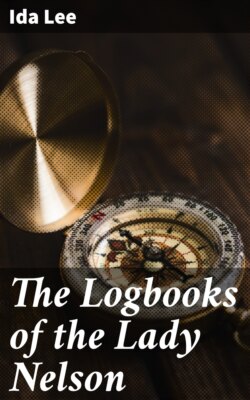Читать книгу The Logbooks of the Lady Nelson - Ida Lee - Страница 3
На сайте Литреса книга снята с продажи.
PREFACE.
ОглавлениеTable of Contents
The objects for which the Lady Nelson's voyages were undertaken render her logbooks of more than ordinary interest. She was essentially an Australian discovery ship and during her successive commissions she was employed exclusively in Australian waters. The number of voyages that she made will perhaps never be accurately known, but her logbooks in existence testify to the important missions that she accomplished. The most notable are those which record early discoveries in Victoria: the exploration of the Queensland coast: the surveys of King Island and the Kent Group: the visits to New Zealand and the founding of settlements at Hobart, Port Dalrymple, and Melville Island. Seldom can the logbooks of a single ship show such a record. Their publication seemed very necessary, for the handwriting on the pages of some of them is so faded that it is already difficult to decipher, and apparently only the story of Grant's voyages and the extracts from Murray's log published by Labilliere in the Early History of Victoria have ever before been published. In transcription I have somewhat modernized the spelling where old or incorrect forms tended to obscure the sense, and omitted repetitions, as it would have been impossible to include within the limits of one volume the whole of the contents of the logbooks. The story of the Lady Nelson as told by Grant has in places been paraphrased, for he sometimes writes it in diary form under date headings and at others he inserts the date in the narrative. The entries from the logbooks of Murray, Curtoys and Symons, in the Public Record Office, with such omissions as I have specified, are printed verbatim.
Murray's charts now published are distinctly valuable, as in the fourth volume of the Historical Records of New South Wales, where they should be found, it is stated that they are "unfortunately missing."
On my inquiring at the Admiralty, Mr. Perrin, the Librarian, to whom my cordial thanks are due, made a special search and was fortunate enough to discover them. Thus, after a long separation, Murray's charts and his journal are united again in this volume. Perhaps the most important chart, and the one which should appeal especially to the people of Victoria, is that of Port Phillip showing the track of the Lady Nelson's boat when the brig entered the bay for the first time. Murray's log telling of this discovery ends on March 24th, 1802. In writing later to the Duke of Portland, Governor King says: "The Lady Nelson's return just before I closed my letters enabled me to transmit Acting-Lieutenant Murray's log copies of the discoveries of King Island and Port Phillip. These important discoveries, being combined with the chart of former surveys, I hope will convince your Grace that that highly useful vessel the Lady Nelson has not been idle under my direction." The charts were sent home in charge of Lieutenant Mackellar, who sailed in the ship Caroline on March 30th, 1802, six days after the Lady Nelson's return. Duplicates were forwarded by the Speedy, which left Sydney in June, but a comparison of those at the Admiralty shows that King added nothing further to this second series.
My thanks are also due to Lieutenant Bell, R.N., whose researches have enabled me to publish the charts of the Queensland coast. These old charts cannot fail to interest students of Australian history. It is possible that they do not include all that were sent home at first, nor are the Lady Nelson's logbooks complete; those however of Grant and Murray, Curtoys and Symons, give us the story of the work carried out by those energetic seamen. They are writings worthy of being more widely known, for they are records left by men who sailed uncharted seas along unknown coasts in days which will not come again—men who have helped to give to later generations a spacious continent with a limitless horizon.
IDA LEE.
